Back on track
Annual report 2021
In 2021, Covid-19 loosened its stranglehold and relations among Nordic countries were able to return to normal. Activities during the first half of the year were digital, but NORA was able to hold in-person events during the second half of the year, to the great delight of the participants. Being able to meet physically was a source of enthusiasm and commitment.
NORA made 15 grants totalling 4.6 million Danish kroner to external projects in 2021. At the end of the year, NORA’s project portfolio included 32 projects.
The Nordic Council of Ministers’ Vision 2030 for a green, competitive and socially sustainable Nordic region is NORA’s lodestar, both when evaluating potential grantees and when organising activities. In 2021, NORA’s funding went to activities that support the vision in various ways.
NORA held three main activities in 2021. In the first half of the year, we held a youth hackathon focusing on health and tourism. In the autumn, we held a conference in the Faroe Islands focusing on regenerative tourism. In addition, NORA hosted a celebration of its 25th anniversary at Nordatlantens Brygge in Copenhagen.
Our biggest outreach effort in 2021 was our participation at the Arctic Circle conference. There, NORA presented two of its projects: seaweed farming and a project transferring knowledge about seal as a resource from Inuit to coastal Sámi. During the conference, we also participated in a session about the direction of relations in the North Atlantic.
Last year, we learned that 2020 was unique, but in its own special way 2021 helped to demonstrate the difference between making do on-line and making progress together.
In 2022, NORA will be led by Greenland. NORA’s action plan includes some uniquely Greenlandic elements, and we look forward to an engaging 2022.
SPECIAL EVENTS 2021
In addition to NORA’s core activity of funding collaborative projects in the North Atlantic, NORA also initiates projects of its own that help to create new opportunities in the region. For most of 2021, the pandemic limited people’s opportunity to meet face-to-face. So, in that respect, the timing of our on-line event, the North Atlantic Youth Hackathon, in March could not have been better. And when Covid retreated (albeit momentarily, it turned out) in October, NORA succeeded in holding a major tourism conference in the Faroe Islands that was attended by about 120 participants. For NORA, 2021 was also the 25th anniversary of our founding, and we celebrated this in a big way in Copenhagen. Among NORA’s other activities were participation at the Arctic Circle conference in Reykjavík in October, where we took part in a session about the blue bioeconomy that was fully in line with who we are. During the conference, NORA was also invited to give its perspective on the future of relations in the North Atlantic.
The blue bio-economy in the North Atlantic: reviving traditions, moving communities forward
Read moreMention seal as biological resource, and the Inuit communities of North America and Greenland will come to mind.
Both traditionally and today, the seal is closely tied to the survival of Inuit communities. But what is quickly being forgotten, according to Andreas Hoffmann, is that seals were once a crucial resource for indigenous and non-indigenous communities throughout the northern part of the Nordic region and north-western Russia.
“About 20 years ago, it was even still common in the Gulf of Bothnia to place a seal head on a pole in front of your property to protect it from bad ghosts,” Hoffmann, an author and the head of an organisation called the Arctic Culture Lab, said during a panel about the blue bio-economy organised in part by NORA during the 2021 Arctic Circle conference.
Through his work with the NORA-funded Seal and the Coastal Sámi project, Hoffmann has uncovered a host of connections — from placenames in Norway and legends in Iceland to the use of sealskin to make sporran, the purse that is a part of Scottish Highland dress — that confirm that the seal was long a resource far beyond Inuit communities.
“It’s a cliché to think they are the only ones who used seals,” he said. “Seals were a part of the culture of the entire North Atlantic.”
The importance of seal declined first as western influence spread in indigenous communities, and today has disappeared almost entirely in Europe thanks to anti-sealing campaigns, according to Hoffmann. But, in a world that is increasingly rediscovering the value of local resources, the seal, he argues, is an obvious choice for northern coastal communities, given their large numbers, the nutritional content of seal meat and the durability of their hides.
“In Norway, people are permitted to hunt seals, but no-one does. So, if you have hundreds of seals living off the coast you have a resource that is going to waste.”
Without knowing it, the people of the North Atlantic who turned to seals and other maritime resources to survive were a part of what we today would call the blue bio-economy.
And while projects like the one Hoffmann started look to revive forgotten traditional activities, others are seeking to develop entirely new industries based on the region’s natural resources.
Perhaps the best-known of these — and to date one of the more successful — is Ocean Rainforest. Founded in 2010 with funding from NORA, the Faroe Islands-based firm cultivates and harvests seaweed, primarily for use as a component in consumer and industrial products.
Magni Arge, the Ocean Rainforest chair, described the company as a “sustainable and regenerative” business, but explained that this isn’t at odds with being profitable Indeed, Ocean Rainforest has recently expanded operations to the US and identified potential locations in other parts of the world where seaweed can be harvested commercially.
As a young firm in an emerging industry, Ocean Rainforest relies heavily on research and development to refine its operations. And this, according to Anna Karlsdóttir, a senior research fellow with Nordregio, a research institute, is typical of the way modern bio-economy businesses operate. And it is precisely this profile that makes them attractive to young people interested in putting their education to use in the home regions.
To date, there is little evidence that new, non-traditional business activities can play a role in developing rural economies, according to Karlsdóttir, but she reckons that if they are to be successful they must focus on turning ordinary biological resources from the sea or shore into higher value products.
“It remains to see how it will turn out,” she said, “but there is considerable potential for job creation.”
Read less
Size does matter: expanding ties for a stronger North Atlantic
Read moreDuring the 2021 Arctic Circle conference in Reykjavík, senior NORA advisor Jákup Sørensen was invited to give his perspective on the future of relations in the North Atlantic.
NORA was established 25 years ago this year to in order to include what today are the three northernmost counties of Norway in what had been an association of the countries of the west Nordic region — Iceland, the Faroe Islands, Greenland. Today one of the organisation’s main activities is to sponsor projects that involve partners in multiple members.
As an example of the impact of NORA’s work, Sørensen described how communities as geographically distant as Qaqortoq, in southern Greenland, and Vadsø, in extreme north-eastern Norway, have worked together on projects.
“Despite being separated by a distance of 3,500 kilometres, these are neighbours that see they have things they can cooperate on,” he says.
In part, this is possible because all of NORA’s members see the ocean area they all border not as a barrier but as something that connects them and has resulted in shared traits — and, in many cases, similar problems.
But, conscious that their location in the northern North Atlantic places its members on the periphery of the Nordic region, NORA itself has from the start sought to cultivate ties with its nearest neighbours, which it defines as eastern Canada, the state of Maine in the United States, Scotland and its northern islands, as well as Ireland.
Doing so, according to Sørensen, gives the countries more of a say when what national capitals or Brussels exercise what he described as “metropolitan imperialism” (think of the EU when it makes decisions that have an effect on countries that aren’t members, and that have an impact at the local level in these areas).
“We are peripheral, and that means we are forced to look at the world through lenses that are formed in Brussels or in Copenhagen,” he said. “What they decide affects us. For them, the things they are dealing with are international relations, but, for us, they are local issues that relate to our livelihoods or traditional activities.”
Just like relations amongst NORA’s members are driven more by shared concerns than distance, expanded ties between NORA and motivated by a feeling of being overlooked by further up in the political system.
“I think we are affected in a similar way by decisions that are taken far away as they would be in Maine, or in Orkney or in Svalbard,” Sørensen said. “We have a lot of things in common, and the projects we work on together could allow us to look at our issues through our own lenses.”
When NORA approaches a potential partner, the response, Sørsensen said he finds, often depends on how peripheral they find themselves. His work establishing ties in relatively content Ireland, for example, remains on the “personal level”, while in Scotland, Brexit has generated more interest amongst decision makers in relations north.
Similarly, in his experience, the further out on the periphery of a country NORA goes, the more likely he is to find interest. Particularly given the relatively small scale of its activities (Project funding, for example, tops out at 500,000 Danish kroner, or about £50,000, per year.
“The first time we went to Edinburgh, they served us a cup of coffee and listened politely, but £50,000 wasn’t that much for them in the grand scheme of things. So we went on to Inverness, to the headquarters of the Highlands and Islands Enterprise. And we told them what we could offer, and we got a cup of coffee — and a biscuit. Then we went to Orkney, and there they treated us to dinner were like ‘Wow! We can do a lot with £50,000.’”Read less
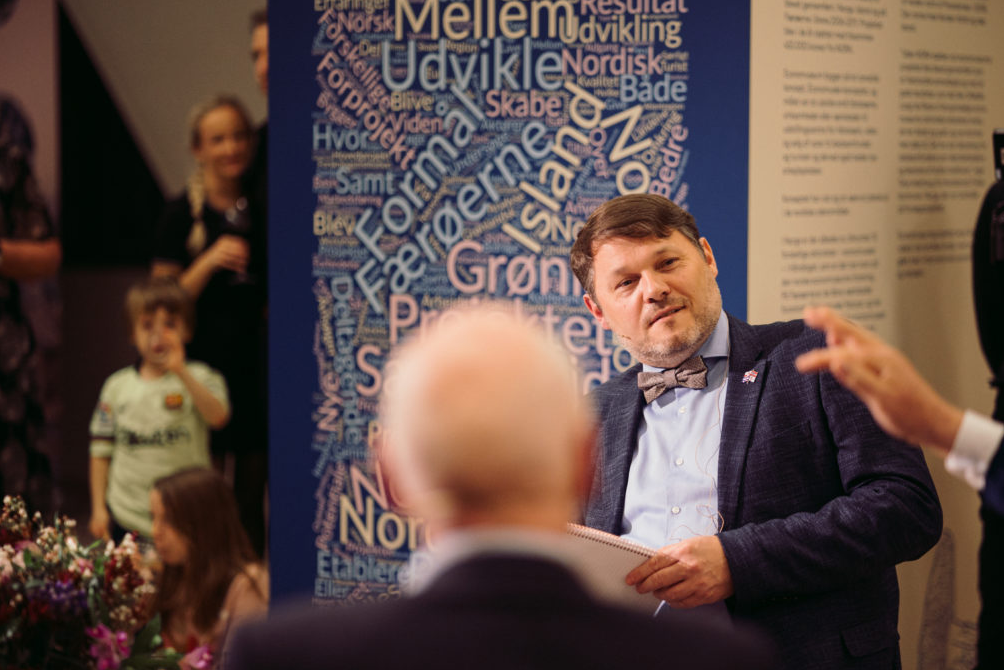
Regenerative Tourism – building a healthy tourism in the Nordics
Read moreThe tourism industry is the sector that has suffered the most from the Covid-19 pandemic. Travel restrictions, closed borders and economic hardship have led to an almost standstill in tourist activities, international work travels, and conferences. A negative impact on tourism has a negative impact on other vital industries for the economic growth in the Nordic region.
NORA therefore decided to organize a tourism conference as part of their 2021 programme. The purpose of the conference called ‘Regenerative Tourism – building a healthy tourism in the Nordics’ was to address the challenges that the tourism industry has been facing in the Nordic region both during and after the pandemic. The focus was to build back better, while aiming for a higher degree of local economic revenue, and environmental and social sustainability.
When the world opens for travel again, there will be tough competition between countries to attract travelers. At the same time, surveys show that people in the future, to a large degree, will focus on sustainable travel and the Nordic countries have a strong position there already. The Nordic Council of Minister’s ambitious goal – that the Nordic region is to become the most sustainable and integrated region in the world by 2030 – fits well with this trend for sustainable travel. An integrated region requires cooperation across borders and there are already several tourism projects within the Nordic region. The hope was that a joint conference could lay the groundwork for the restart of a regenerative tourism post COVID-19 in the Nordic and that the Nordic region can be established as the obvious choice for the type of travelers that the Nordic countries want to attract.
The conference was organized as a combination of keynote presentations from prominent voices in tourism and keynotes with workshops with specific, hands-on examples from tourism providers in the NORA region and the other Nordic countries.
Anna Pollock, Signe Jungersted and Zita Cobb gave valuable insights and the workshops focused on three themes: Best Practice, Local Involvement and Seasonality. Also, the winning idea on tourism in rural areas from the NORA hackathon “Think Rural, Think Digital, Think Ahead” and Bente Bratland Holm, head of Visit Norway, presented their new tourism strategy.
The conference took place in Tórshavn, the capital of the Faroe Islands, on 19 and 20 October 2021. Around 120 people took part in the conference, just over half of them came from the Faroe Islands, the rest of the participants came primarily from the other Nordic countries but also from Great Britain, Italy, Estonia, New Foundland, Canada and USA.
The conference ran over two days with keynote presentations and Q&A sessions in the morning of 19 October and plenary presentations in the early afternoon and the morning of 20 October. The conference ended with a Q&A session with the three keynote presenters.
The afternoon of 19 October was dedicated to parallel sessions with presentations from tourism providers from the Nordic countries who were invited to share best cases within Seasonality, Best Practice and Local Involvement. See the programme HERE (https://nora.fo/rtc-program)
In the afternoon of the second conference day the delegates could choose between different tours/excursions. Heimablídni, dine with locals, with Harriet and John and their children in the small town of Æðuvík, two different ‘closed for maintenance initiatives’ to maintain hiking paths to the villages of Gásadalur and Velbastaður and a guided tour to the art museum in Tórshavn. The tours together with the Tórshavn municipality welcome reception and the dinner on the first conference day gave the delegates ample opportunities to network and further discuss the presentations and the findings from the conference under more informal circumstances.
The feedback from the conference delegates and the presenters was very good. People were happy to be able to meet again in person after almost two years of covid and the general feedback was, that people felt that the topics of the conference were very important for the way forward in Nordic tourism. There was a very enthusiastic and optimistic energy at the conference and among the participants. The feedback was that the visionary keynotes combined with hands on examples from tourism in the Nordics was a perfect combination, which gave both inspiration but also specific examples that people could take back home.
The organisers would have liked to see more people from DMOs in the Nordics and more tourism providers from the NORA region, so that more people could be part of the post-conference conversations, however the presentations are online, so they are still able to ‘attend’. So far, the conference presentations have had around 200 views.
In addition to the conference, Anna Pollock and Zita Cobb had presentations at the Faroese University the day after the conference for students at social studies department. Dennis Holm from the small Faroese village of Vágur also had a presentation on how the village has developed from a fishing community to an experience economy community. This was part of the work of conferences giving back to the local communities and legacy.
The directors from all the Nordic Visit organisations took part in the conference. It was the first time that they all met in person after covid and after some changes in management at the Visit organisations. In addition to attending the conference, they had meetings where they discussed future cooperation. The ambitious goal of the conference was to write a joint statement signed by the Visit directors on the future path of tourism in the Nordics. There was a general understanding of the importance of such a guiding document and also a wish to work more closely together, but the document was not signed, as some of the Visit organisations are only working with marketing and promotion and not development and were therefore unable to sign a document on the future development of the Nordic countries. Following the conference the Visit directors have decided to meet and see how they can work together after the conference.
There was a lot of talk about the importance of people in Nordic tourism meeting on a regular basis to discuss issues of mutual interest. The hope is, that the conference will be seen as a first in many joint conferences on tourism in the Nordics in the future and will lay the groundwork for future cooperation among tourism providers and authorities in the Nordics.
Nordic Atlantic Cooperation (NORA) was the initial project leader of the conference, but due to change in staff, Visit Faroe Islands took over the project management of the conference. NORA contributed with DKK 400,000, Arctic Cooperation Programme contributed with DKK 350,000, NATA with DKK 100,000, Visit Faroe Islands with DKK 100,000 and the Municipality of Tórshavn hosted a welcome reception.
Link to presentations, images etc www.visitfaroeislands.com/regenerative
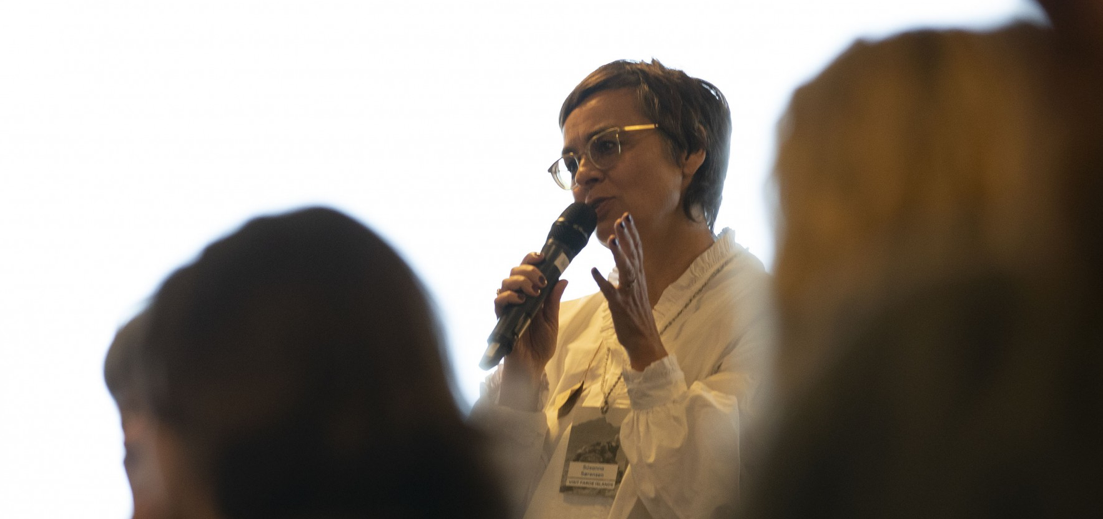
North Atlantic Hackathon 2021
Read moreNorth Atlantic Youth Hackathon gave new ideas to the region
On the weekend of 19-21 March 2021, the Think Rural, Think Digital, Think Ahead event brought together young people aged 18-25 from all over the North Atlantic region for a virtual youth hackathon. Focusing on two main themes — digital health and rural tourism — 11 teams of young entrepreneurs worked together in an exciting competition to come up with innovative ideas for a better North Atlantic region. The winning ideas were an on-line health coach and a platform for sustainable tourism. The 31 participants were divided into teams of up to four and had 48 hours to find a good idea, a solution or a product for the North Atlantic region. The event was organised by NORA in collaboration with the Nordic Council of Ministers and partners from Scotland, Maine and Ontario.
Public health is important to all communities, and, during the pandemic, it was a primary concern for top-level decision-makers, making it an obvious choice for one of the hackathon’s challenges. Long distances, low population density, lack of qualified health workers in the immediate area and an unbalanced demographic composition are a fact of life for rural communities, but these factors put pressure on healthcare services, and this makes them ripe for disruption in the form of innovative and community-oriented solutions. The hackathon’s digital-health challenge asked participants to address head on the healthcare situation in the North Atlantic, both during and after the pandemic. Five of the participating teams chose to work with this topic.
The winning idea was an app that will help people with irritable-bowel syndrome to identify eating patterns and foods that can help them keep their symptoms at bay. The idea was developed by a team of participants from Canada, Scotland and Norway. The jury found that the idea had a highly user-centred design that personalised the advice and expanded the use of technology. The team won 40,000 kroner and was invited to participate in a 12-week accelerator programme for further development of the idea.
Second place went to the Scan, Skin, Send project. The idea was developed by a Scottish participant as an on-line tool to make it easier and faster to diagnose skin problems.
Third place went to Frøya. Developed by a team of three from Canada and Norway, the project’s idea involved an app to help women in rural areas get appropriate and timely advice and help during pregnancy.

Tourism is a major source of income, jobs and cultural exchange in the North Atlantic. The industry struggled during the pandemic, and restrictions imposed to contain Covid-19 had significant economic and social consequences, which led the hackathon’s organisers to make one of the challenges how to revive and renew the industry after the pandemic — while at the same time making it more resilient and sustainable. A green and sustainable tourism industry is crucial for the Nordic region to achieve its goal of becoming the most sustainable and integrated region in the world by 2030. Hackathon participants were encouraged to come up with ideas that had the potential to create jobs — preferably year-round jobs — in the region. Six international teams participated in this category.
The winning idea was the Rural Roots platform for climate-conscious travellers. Rural Roots connects environmentally conscious consumers with rural entrepreneurs who want to contribute to the green transition by offering coupons to visitors to rural areas. A portion of each sale is invested in climate initiatives in the areas where the coupon is redeemed. The platform makes it possible for travellers to experience local handicrafts, while also giving them the satisfaction of knowing they are contributing to the community’s transition to sustainability. The winning idea was developed by a team from Scotland and Norway. In addition to receiving 40,000 kroner in prize money, the team was invited to present its idea at a conference for regenerative tourism in the Faroe Islands in October 2021.
Second place went to an idea titled Rural Lights. Developed by a team of three from Scotland and Norway, the idea involves creating an app that will help people to respect the interests of landowners when using nature for recreational purposes. One of the aims of the app is to improve communication among interest groups in the hopes that being better informed will reduce the risk of conflicts.
Third place went to Loc8. An idea developed by a team of four from Greenland and Scotland, the Loc8 app seeks to cultivate a relationship between communities and the people who visit them by giving the visitors good experiences that have a positive, sustainable impact on the places they visit.

The North Atlantic hackathon was the start of what will hopefully develop into products and solutions that benefit the entire North Atlantic region. Now it is up to the teams from the seven participating countries — Canada, the US, Iceland, Faroe Islands, Greenland, Norway and Scotland — to run with their ideas.
The hackathon was organised by:
- NORA
- The Scottish Government
- Highlands and Islands Enterprise (HIE)
- University of New England (UNE)
- Maine North Atlantic Development Office (MENADO)
- Cooperation Council of Ontario (CCO)
- Nordic Council of Ministers
See all 11 submissions https://thinkrural.org/teams
Read less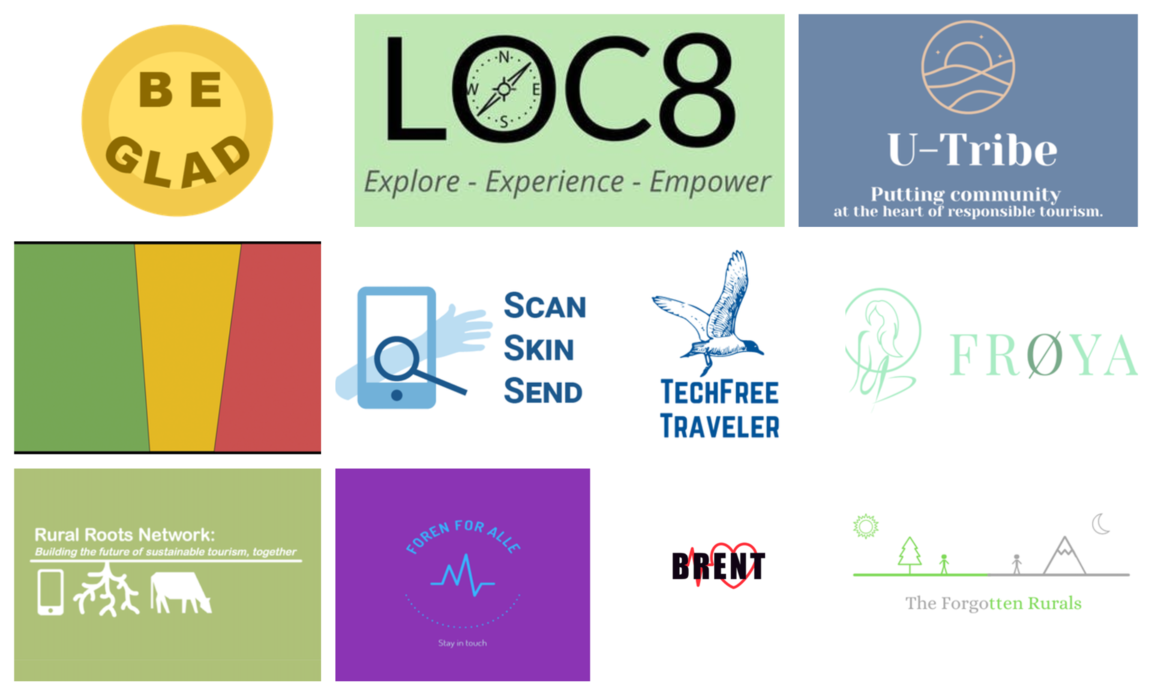
NORA 1996-2021
Read moreIn 2021, we celebrated the 25th anniversary of the establishment of NORA, the organisation North Atlantic co-operation. The anniversary commemorates the decision by coastal Norway to join the West Nordic partnership that already included Iceland, Greenland and the Faroe Islands. The NORA constituents are linked by their geographical location, common traits and shared challenges, as well as their historical, institutional and cultural ties.
NORA’s overall purpose has always been to strengthen collaboration between stakeholders in the North Atlantic across professional and national borders and to strengthen the economy of the region while also promoting sustainability in all its forms. In accordance with the wishes of the Nordic Council of Ministers, NORA has a long history of collaboration with the communities that border the NORA area. The focus has been on Scotland and Canada, but the relationships extend as far as the US state of Maine.

NORA’s activities see it take on three different profiles: • the project-supporting NORA, which seeks to interact with as many groups in the region as possible in order to establish the critical mass of participants needed for progress to be made in NORA priority areas • the agenda-setting NORA, which influences the region’s agendas through strategic initiatives and the results of the projects it funds • the alliance-creating NORA, which fosters networks among stakeholders in the region in order to achieve the greatest possible synergy through co-operation and collaboration
Over the past 25 years, NORA has provided an average of 5 million Danish kroner in project funding annually, or around 130 kroner million in total.
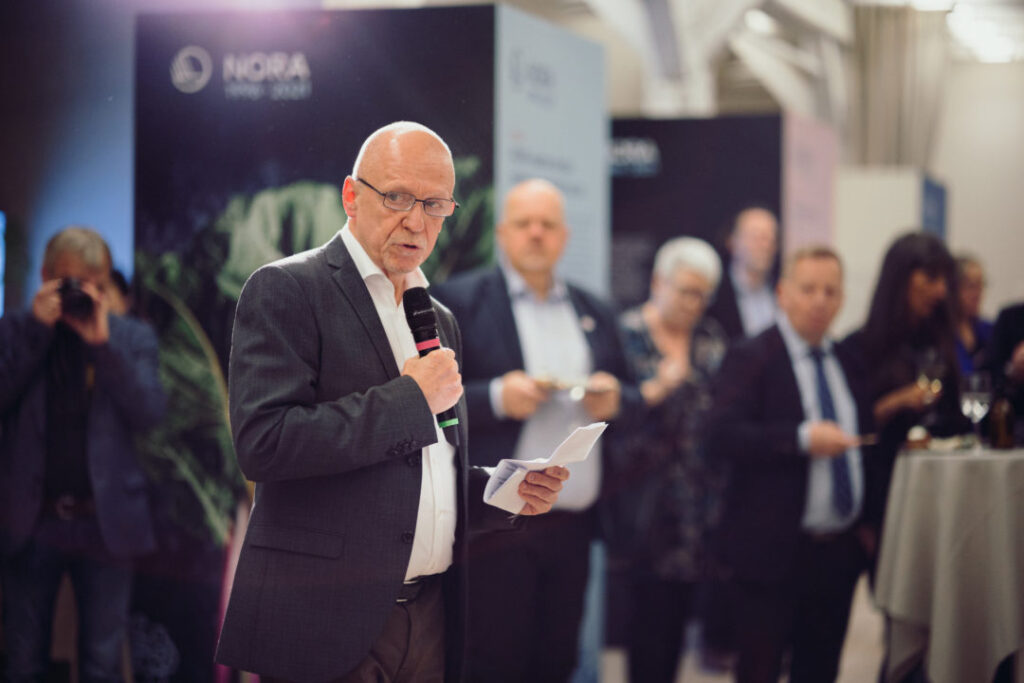
Several of the projects that NORA has funded have brought a wealth of knowledge to the fore that can be highly valuable for a variety of industries and interest groups. Some have created alliances across industries, research fields and national borders. Others have focused on new and unexpected opportunities and issues. Not all of the projects have been commercially oriented, but some have shown themselves to have such potential that they were developed into firms that today have a value that far exceeds the amount of all of the grants NORA has ever made.
On 3 November 2021, NORA hosted a grand celebration at Nordatlantens Brygge in Copenhagen. As part of the event, a handsome display of a selection of the exciting projects NORA has funded gave guests the chance to read, hear and even taste what they were about.
See the projects
In addition to the exhibition, guests were treated to an engaging discussion among the three veterans of North Atlantic relations: Iceland’s Steingrímur Sigfusson, Norway’s Eirik Fiva and the Faroe Islands’ Jákup Mørkøre. The westward-oriented relationship arose in the mid-70s and made significant progress in the 80s on the backs of the groups that emerged at that time to promote West Nordic collaboration. The discussion centred on NORA’s quarter century of experience as a project-funder and alliance-creator, as well as its future role of setting the agenda at the junction of political strategy and co-operation among the region’s civil-society groups.
The engaging discussion focused on West Nordic co-operation in a historical perspective and was followed by a no-less-insightful presentation by sociologist Dennis Holm, who gave his take on the challenges and opportunities he sees in the North Atlantic region today and in the future. Among his observations: a trend among younger generations in particular to question today’s consumer-oriented society and for peripheral areas to become more of a viable alternative for those seeking work-life balance. In his opinion there is a focus on creating a strong connection between nature and society that will make outlying areas attractive for former residents to return to, and for new residents to discover. Holm believes that NORA will continue to play an important role as a facilitator that can forge ties between North Atlantic communities and draw attention to the region’s success stories.

As the grand finale for the evening, we had the exquisite pleasure of listening to a performance by the winner of the 2021 Nordic Council Music Prize, Eivør Pálsdóttir, from the Faroe Islands, who enchanted the gathering with her melodic voice.


Herring stocks in the North Atlantic
Read moreThere are seven herring stocks in the North Atlantic. The project will use genetic studies known as SNP studies to differentiate the stocks, and this will be used in the management of the seven herring stocks, among other things using the advice given by ICES. It is expected that the results of the project will strengthen the sustainable management of herring stocks.
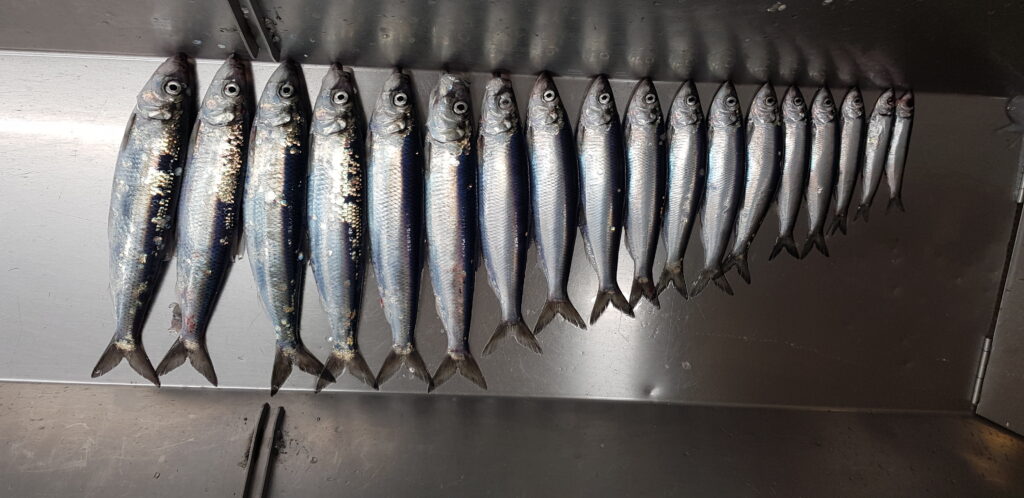
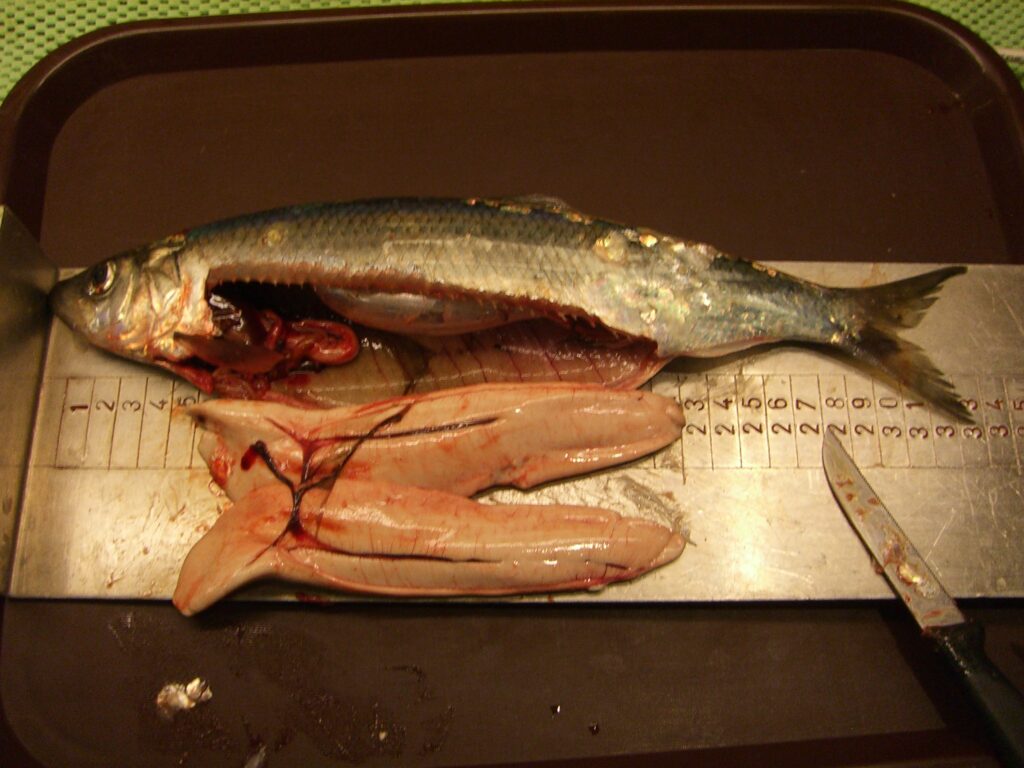
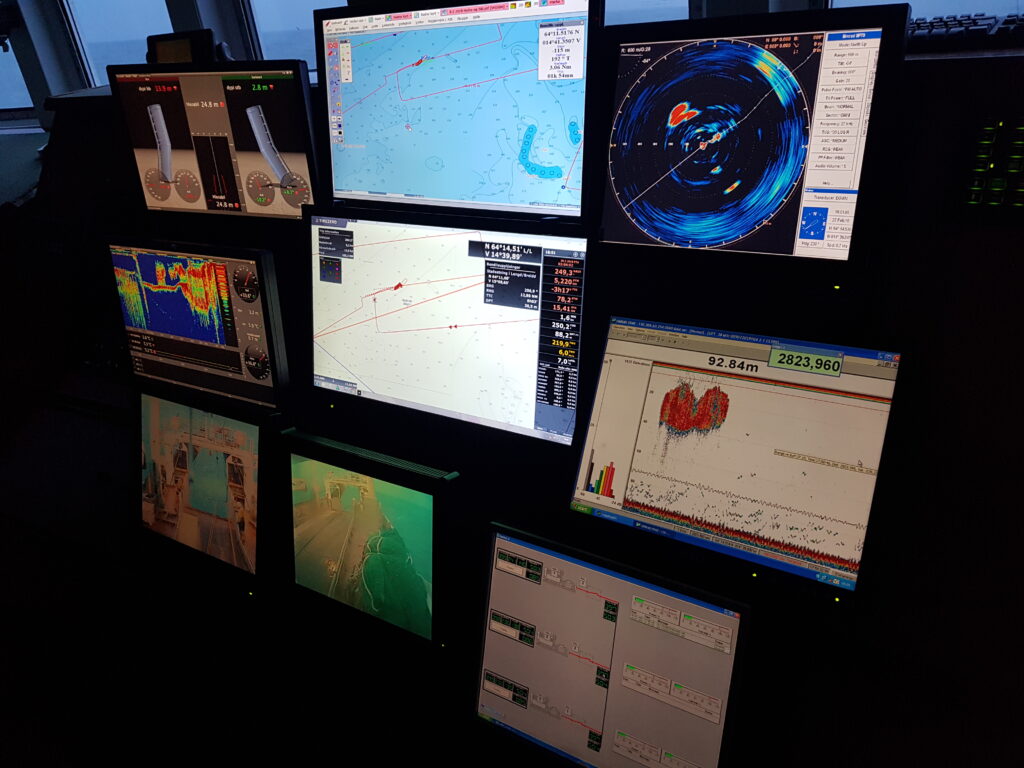
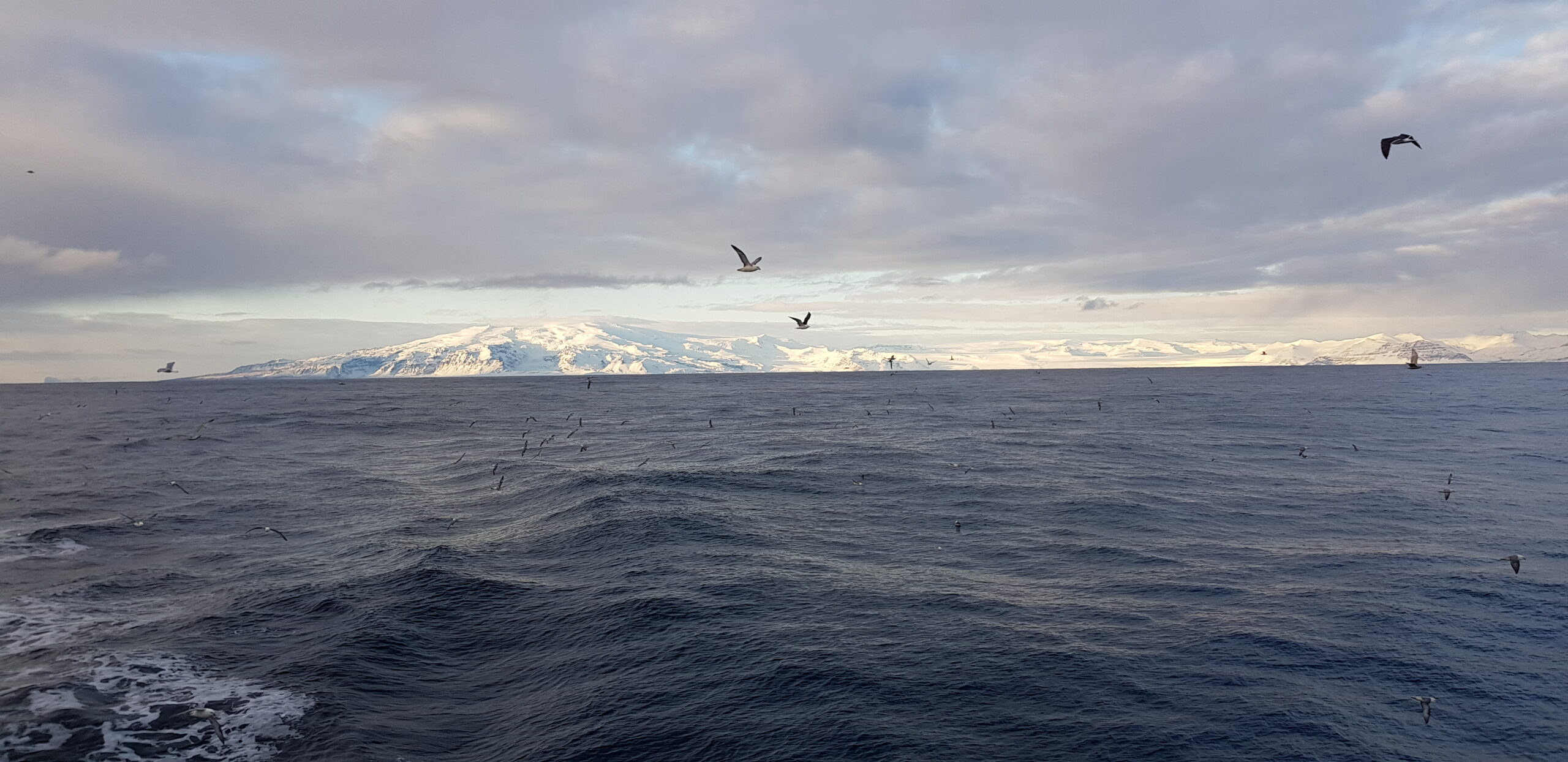
Projects funded in 2021
One of NORA’s core activities is to make grants to cooperation projects that seek to further socio-economic development in the North Atlantic region. NORA supports organisations and firms that contribute to innovation, concept development and increased activity in the region.
All of the projects that receive NORA funding make a contribution to addressing the issues facing the region and are relevant to NORA’s main objective: to create a strong and dynamic North Atlantic that is notable for its healthy and sustainable economies. As the North Atlantic connects NORA’s constituents, many of the projects receiving funding naturally deal with maritime resources. Other NORA-funded projects contribute to creating and developing new directions and opportunities. In 2021, NORA-funded projects dealt with maritime activities, tourism, IT, transport, youth and agriculture.
NORA funded 15 projects in 2021.
NORA’s project portfolio currently includes 32 projects. Some projects recently received funding; others are close to completion.
Experience tourism
Empty buildings — many of them formerly used for industrial purposes — are found throughout the NORA area. Using the abandoned herring-processing plant in the town of Hjalteyri, Iceland, as a case study, the project will refurbish and expand these sites with the aim of making them cornerstones of local experience-tourism economies.
NORA funding in 2021: DKK 60,000
CloseELECTIN
Phasing out fossil fuels for all forms of transport is generally accepted as beneficial, with electricity and, in some cases, hydrogen, the leading replacements. Comparing case studies from the Faroe Islands and Iceland, the project will study the cost of installing the infrastructure necessary for sparsely populated areas to phase out fossil fuels for transport. The project will seek to identify potential bottlenecks for lorries and other heavy transport vehicles. Charging these types of vehicles using rapid chargers can place significant strain on local power grids, and multiple large vehicles charging at one time could potentially overburden a local grid. The project will compare electric-powered vehicles with hydrogen-powered vehicles.
NORA fundingin 2021 DKK 300.000
CloseInnovation Lab Greenland
The goal of the project is to promote participation of NORA-area residents in the 2022 ULEASH Innovation Lab Greenland. UNLEASH Innovation Lab Greenland aims teach innovation skills to young people in the North Atlantic and promote ways to meet relevant UN Sustainable Development Goals, including Good Health and Well-Being, Quality Education, Climate Action and Life Below Water.
NORA funding in 2021: DKK 500,000
CloseAngel Investor
Changing Times
Changes in the fishing industry are forcing coastal communities close to Reykjavík to reassess their economic foundation. The changes in the workforce makeup in the town of Akranes, and the requirements businesses there have for commercial property are typical of the development seen elsewhere in Iceland. The project will seek to identify communities in the Faroe Islands and Northern Norway that are undergoing the same development and how buildings that were formerly used by the fishing industry can be repurposed.
NORA funding in 2021: DKK 30,000
CloseNACE
This transport project will study the feasibility of linking North Atlantic ports into rail lines connecting Narvik, Norway with South-East Asia. Shipping containers are already transported between Helsinki and South-East Asia by electrified rail, and the project will seek to identify whether the network can be extended to Tórshavn and Reykjavík via Narvik. Since their introduction, shipping containers have revolutionised global trade, and their importance increases with economic growth. The goal of the project is for North Atlantic ports to take full advantage of trends in container transport.
NORA funding in 2021: DKK 432,413
CloseNORA in numbers
The Nordic Council of Ministers’ action plan for Vision 2030 applies to the period 2021-2024. The action plan lays out the initiatives that are necessary if the Nordic Council of Ministers and associated institutions are to achieve the Vision 2030 objectives.
NORA’s projects in 2021 focused on the vision’s three strategic priorities: a green Nordic region, a competitive Nordic region and a socially sustainable Nordic region. In total, NORA project funding amounted to 5.5 million kroner in 2021. Of this, 4.6 million kroner went to 15 external projects. The remaining 900,000 kroner went to two NORA-led projects. In 2021, 33% of project funding went to projects related to the green transition, 41% to projects related to competitiveness and the remaining 26% to social sustainability in the Nordic region.
At the end of 2021, NORA’s project portfolio included 32 active external projects at various stages in their progress. Eleven projects are led by a Norwegian partner, 10 by an Icelandic partner, six by a Greenlandic partner and five by a Faroese partner. During the year, we successfully completed two projects of our own. In March, we hosted the North Atlantic digital youth hackathon, Think Local, Think Digital, Think Ahead, with the participation of young people from all over the Nordic region, as well as our western neighbours. In October, we held the Regenerative Tourism — Building a Healthy Tourism in the Nordics conference in the Faroe Islands. It was attended by 120 participants
NORA has a broad and diverse network of contacts in the North Atlantic, and at the end of 2021 the projects in our portfolio involved 173 different partners. Naturally, most come from the NORA area — Greenland, Iceland, the Faroe Islands and coastal Norway — but we also have project partners from the wider Nordic region, as well as Canada, Scotland, the Orkney Islands, the US and England. The range of our network is a highly valuable asset and places NORA in a unique position as a contact-creating facilitator for stakeholders in the North Atlantic and in our western neighbours.
Project
Lorem Ipsum
Lorem Ipsum
Lorem Ipsum
Lorem Ipsum
Lorem Ipsum
Grant
DKK 2.459.900
DKK 2.459.900
DKK 2.459.900
DKK 2.459.900
DKK 2.459.900
2020
DKK 2.459.900
DKK 2.459.900
DKK 2.459.900
DKK 2.459.900
DKK 2.459.900
2019
DKK 2.459.900
DKK 2.459.900
DKK 2.459.900
DKK 2.459.900
DKK 2.459.900
2021 in brief
2 funding rounds
173 project partners from 11 countries
34 projects in our portfolio
2 internal projects
120 participants at our tourism conference
31 participants at our hackathon
15 external projects funded
5.5 million kroner in project support
3 successful major events
2 Nordic projects for which we serve as managing organisation
5 newsletters sent
3,102 newsletter recipients
14,484 website visitors
41,521 page views
2.87 pages per session
4,690 followers on Facebook
Nora supports Vision 2030
The Nordic Council of Ministers is obliged to live up to the Nordic prime ministers’ vision for the Nordic region by 2030. Investments in three strategic areas will contribute to the Nordic region becoming the world’s most sustainable and integrated region by 2030.
To achieve the vision, the Nordic Council of Ministers is investing in:
- A green Nordic region — We will work together to promote a green transformation of our society and to work for carbon neutrality and a sustainable circular and bio-based economy.
- A competitive Nordic region — We will work together to promote green growth in the Nordic region that is based on knowledge, innovation, mobility and digital integration.
- A socially sustainable Nordic region — We will work together to promote an inclusive, just and cohesive region of common values, richer cultural exchange and increased welfare.
As part of the efforts to achieve Vision 2030, NORA has been included in the regional policy initiatives and is focusing on five of the 12 objectives that the ministers for Nordic co-operation have identified. NORA’s tasks primarily consist of the following:
- supporting North Atlantic partnerships that promote the development and implementation of solutions that lead to the sustainable use of natural resources in the bioeconomy, circular economy, tourism, energy and transport industries
- supporting North Atlantic partnerships that promote the development and implementation of innovations that lead to green, digital and technological transformation of the bioeconomy, tourism, energy and transport industries
- supporting North Atlantic partnerships that promote relocation to rural areas and reverse flight by applying innovative solutions and by mobilising young people to take part in local decision-making and other forms of involvement that strengthens the community
- making grants during the 2021-2024 period to between 15 and 30 projects that support the goals of Vision 2030; six of these projects will include partners from the Nordic region’s western neighbours
In 2021, NORA made grants to 17 projects; 33% of project funding went to projects related to the green transition, 41% to projects related to competitiveness and the remaining 26% to social sustainability in the Nordic region. Five of the projects have partners from the Nordic region’s western neighbours (the US, Canada and Scotland).
COMMITTEE
NORA’s Committee is made up of delegations that meet up to twice per year. The chairmanship rotates between member countries. Faroe Islands held the chairmanship in 2021.
No decisions may be made prior to reviews and negotiations. The principle of consensus should be applied in negotiations whenever possible. For decisions of principle to be approved, none of the delegations may oppose the decision.
Faroe Islands
Jákup Mørkøre
Chairman 2021, Committee Member and Member of the Working Group
Alex N. Vilhelm
Committee Member
Súsanna Sørensen
Committee Member
Greenland
Jørn Abelsen-Hansen
Committee Member and Member of the Working Group
Ole Fjordgaard Kjær
Committee Member
Christian Wennecke
Committee Member
Norway
Lene Merete Søderholm
Committee Member and Member of the Working Group
Stig Olsen
Committee Member
Lisbeth Nylund
Committee Member
Iceland
Kristján Þ. Halldórsson
Committee Member and Member of the Working Group
Ásborg Ósk Arnþórsdóttir
Committee Member
Frosti Gíslason
Committee Member
Address
Nordisk Atlantsamarbejde
Bryggjubakki 12
Postboks 259
FO-110 Tórshavn
Færøerne
Tel. (+298) 306990
nora@nora.fo
V-tal: 379557
Newsletter
Be updated on the latest news from NORA